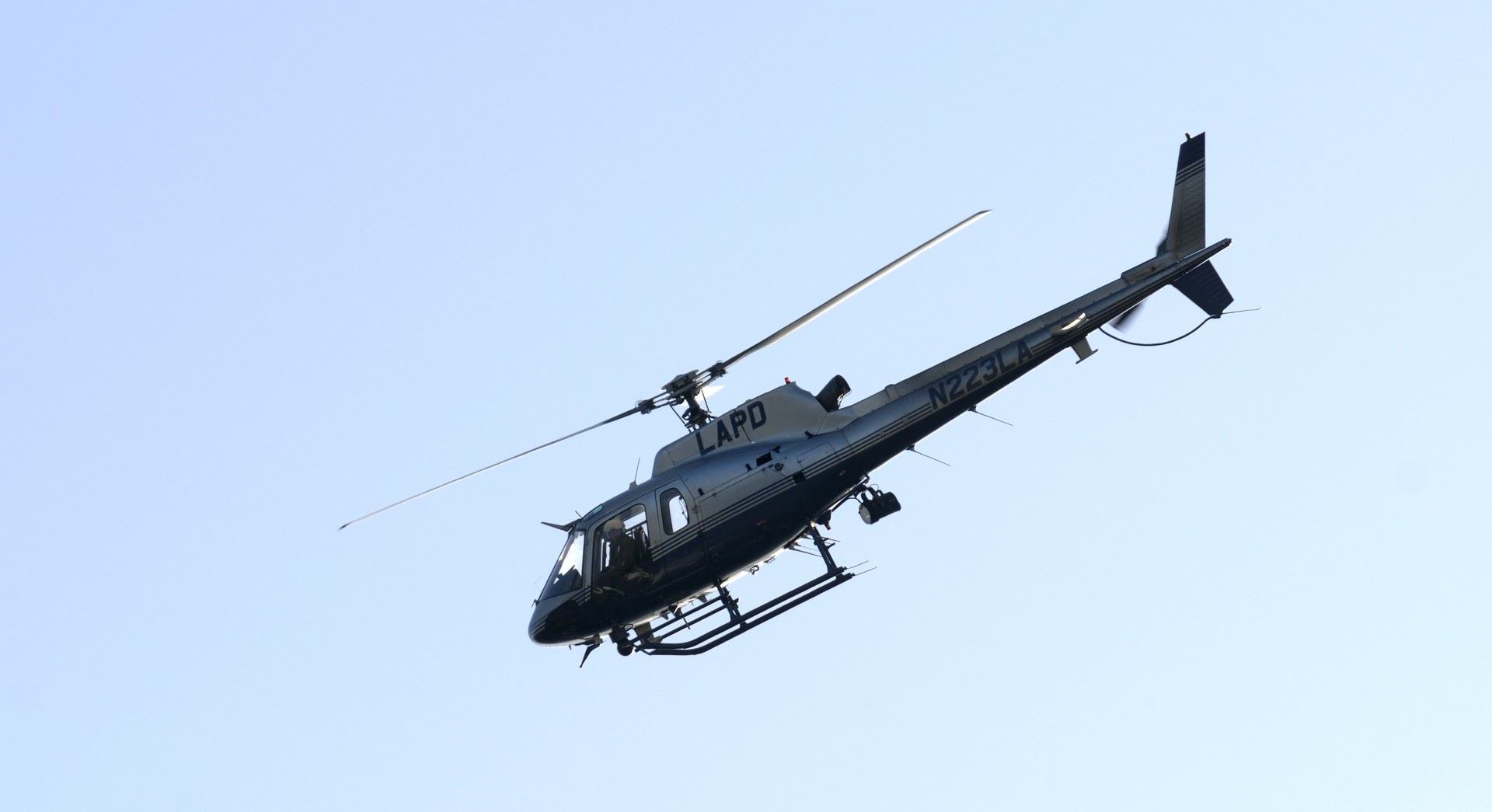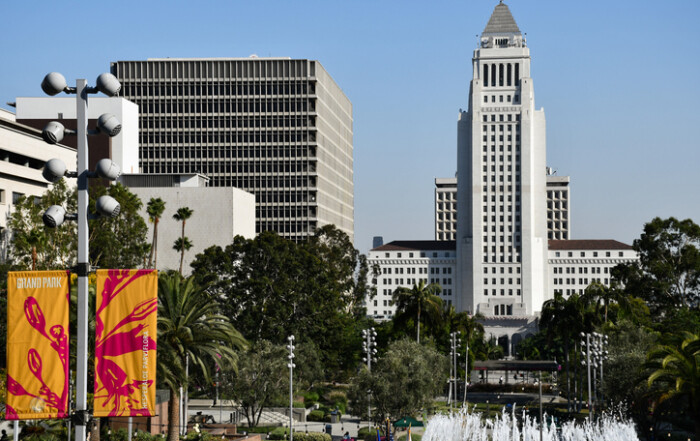Los Angeles Police Department (LAPD) Helicopters cost over $100,000 a day and aren’t used for crime-fighting most of the time.
Those are some of the conclusions reached from an audit, released Monday, of the LAPD’s Air Support Division by the Los Angeles City Controller’s Office. According to the audit — which analyzed data from Fiscal Year 2018, which began July 1, 2018, to Fiscal Year 2022, which ended June 30, 2023 — the use of police helicopters costs the city of Los Angeles $127,805 per day to operate, coming out to around $46.6 million per year.
These operational costs are being used to help with pursuits and other “high-priority” calls just 39 percent of the time, with the remaining 61 percent of its use being for tasks such as ceremonial fly-bys and helicopter patrols.
Los Angeles acquired its first helicopter in 1956, and additional helicopters were acquired before the Air Support Division (ASD) was officially established in 1974. Its goal is to “enhance officer and public safety, reduce the incidence of crime and thus reduce the fear of crime,” according to its mission statement.
The LAPD is relatively unique in its almost around-the-clock use of its helicopters. Two helicopters patrol the city for 20 hours per day, which translates to around 16,000 hours in a year. By comparison, Houston’s Police Department flies just one helicopter for 12 hours per day on its patrols despite dealing with a similar amount of violent crimes and an area 163 square miles larger than L.A.
Additionally, some areas are patrolled more or less than others, leading to negative community impacts from policing and disproportionate environmental effects on those in areas that see more frequent helicopter appearances.
The Pacific Community in West Los Angeles — consisting of the neighborhoods in Del Rey, Manchester Square, Mar Vista, Oakwood, Palms, Playa del Rey, Playa Vista, Venice, and Westchester — are the least patrolled areas in the city, while the 77th Street area in South Los Angeles sees the most patrols.
Measuring the impact of helicopter patrols is difficult, and the little research that has been conducted on the topic has yielded mixed results. Additionally, the Air Support Division doesn’t have tangible metrics for measuring performance and success, which the Controller’s office recommends implementing to better gauge effectiveness.
Citing the scale of the city’s Air Division being noticeably greater than peer jurisdictions, the audit recommends a reevaluation of the scope and size of LAPD’s program. The extensive patrols and significant usage by the LAPD for low-priority tasks was a sign that prompted the audit to recommend a reconsideration of whether or not “Investment in air support activities is accomplishing its intended operational goal.”
“The City and LAPD should examine whether the current scale of ASD operations is the best use of public safety resources,” the audit reads, “And improve the collection and analysis of data in order to ensure police helicopters are responding to situations where aerial response and support is necessary.”
While the success has not been gauged by the department, the environmental impacts of vehicles burning fuel have been quantified, demonstrating the negative impacts that come with the overuse of helicopters.
In those roughly 16,000 hours of flight time by LAPD helicopters annually, about 761,100 gallons of fuel are burned and 7,427 metric tons of carbon dioxide is released, which is the equivalent of just over 19 million miles driven by average gasoline-powered passenger vehicles.
Overuse of helicopters for ceremonial and transportation is one of the key points highlighted by the audit. Ceremonial fly-bys in particular — defined by the ASD manual as “helicopter flights over a ceremony or special event to acknowledge persons or events on the ground, or demonstrating the capabilities of the LAPD’s airborne law enforcement program” — are allotted too much time under the current LAPD policy.
The Controller’s office recommends that new guidelines be implemented to minimize the use of helicopters for ceremonial fly-bys on events that provide little to no public safety value. According to the audit, 109 fly-bys were done at retirement ceremonies and seven were done at golf tournaments, and about $537,000 was spent over the five-year evaluation period.
Helicopters are also used too often for non-urgent transportation, according to the audit. About 890 hours of flight time was dedicated to transporting a variety of people, from LAPD employees to Port Police. Helicopter flight hours are also used to transport parts and move helicopters for maintenance.
LAPD policy allows for transportation of officers when “an LAPD officer’s presence is required in response to a major incident, and the use of a vehicle is impractical, and for flights that support the tactical operations or investigations of other LAPD bureaus,” and notes many of the transportation activities logged by the ASD did not fall under either criterion.
“The department should minimize the use of helicopters for transportation needs that do not directly support the public safety mission of the department,” the audit reads, “And ground-based units either on patrol, conducting investigations, or carrying out special operations.”
Overall, the audit concludes that the ASD is potentially too large, with the funding for the division outpacing several major city departments, including the city clerk’s office and the city administrative office.
“Although further study is necessary,” the audit reads, “Rightsizing opportunities may exist for LAPD air operations.”
Photo by Art Wager on iStockphoto.com
Stay informed. Sign up for The Westside Voice Newsletter
By clicking submit, you agree to share your email address with Westside Voice. We do not sell or share your information with anyone.








